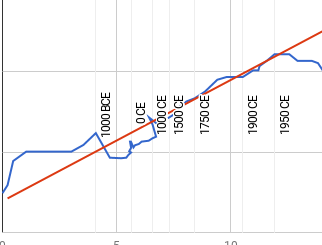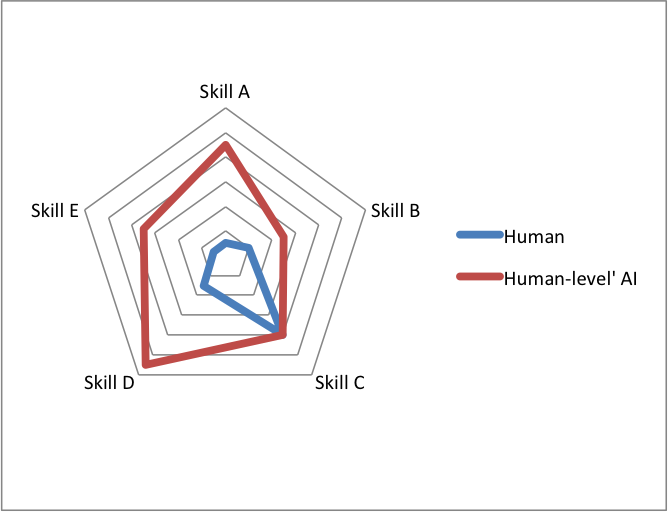The only times gross world product appears to have doubled in n years without having doubled previously in 4n years were between 4,000 BC and 3,000 BC, and most likely between 10,000 BC and 4,000 BC.
Details
Background
A key open question regarding AI risk is how quickly advanced artificial intelligence will ‘take off’, which is to say something like ‘go from being a small source of influence in the world to an overwhelming one’.
In Superintelligence1, Nick Bostrom defines the following answers, seemingly in line with common usage:
- Slow takeoff takes decades or centuries
- Moderate takeoff takes months or years
- Fast takeoff takes minutes to days
However the specific criteria for takeoff having occurred are generally ambiguous.
Paul Christiano has suggested2 operationalizing ‘slow takeoff’ as,
There will be a complete 4 year interval in which world output doubles, before the first 1 year interval in which world output doubles. (Similarly, we’ll see an 8 year doubling before a 2 year doubling, etc.)
Historic precedents
We were interested in whether anything faster than a ‘slow takeoff’ by this definition would be historically unprecedented. That is, we wanted to know whether whenever the economy has doubled in n years, it has always completed a doubling in 4n years or less before the beginning of the n year doubling.
We took historic gross world product (GWP) estimates from Wikipedia3 and checked at each date how long it had taken for the economy to double, and whether it had always at some point doubled in as few as four times as many years prior to the start of that doubling.4
We found two apparent examples of faster takeoffs, so defined:
- Between 4,000 BC and 3,000 BC, GWP doubled in 1,000 years, yet it had never before doubled in as few as 4000 years
- Between 10,000 BC and 4,000 BC, GWP doubled in 6,000 years, yet there is no record of it doubling earlier in as few as 24,000 years. The records at that point are fairly sparse, so this is less clear, but it seems unlikely that there was a doubling in 24,000 years.5 This appears to coincide with the beginning of agriculture, in around 9000BC.6
The 300 year period immediately after 1300 saw a doubling of GWP growth, and the 1200 years beforehand did not see a doubling, however there was an earlier doubling within the 1200 years ending at 1200AD. So this is not technically an instance, but was a case of briefly accelerating growth. GWP between 1100 and 1300 actually declined though, so this is perhaps a different kind of case to the ones we are interested in.
Corresponding author: Daniel Kokotajlo
Notes
- Bostrom, Nick. Superintelligence: Paths, Dangers, Strategies. 1 edition. Oxford: Oxford University Press, 2014.
- paulfchristiano. “Takeoff Speeds.” The Sideways View (blog), February 24, 2018. https://sideways-view.com/2018/02/24/takeoff-speeds/.
- “Gross World Product.” In Wikipedia, August 14, 2019. https://en.wikipedia.org/w/index.php?title=Gross_world_product&oldid=910796857.
The page notes that most of their data comes from J Bradford de Long’s dataset:
J. Bradford DeLong (24 May 1998). “Estimating World GDP, One Million B.C. – Present”. Retrieved 5 February 2013. - [Note May 13 2020: This sheet is temporarily wrong.]
Instances coincide with Column G in this spreadsheet giving a number higher than 4, when E2 is set to 2. - Toward the end of the period it took 15,000 years to grow by $0.6Bn, and growth of $1.8Bn would have been needed for a doubling. So assuming linear growth at the end-of-period rate, this would have taken around 45,000 years, whereas in if growth was speeding up, it should have taken longer.
- Khan Academy. “The Dawn of Agriculture (Article).” Accessed April 14, 2020. https://www.khanacademy.org/humanities/world-history/world-history-beginnings/birth-agriculture-neolithic-revolution/a/where-did-agriculture-come-from.


